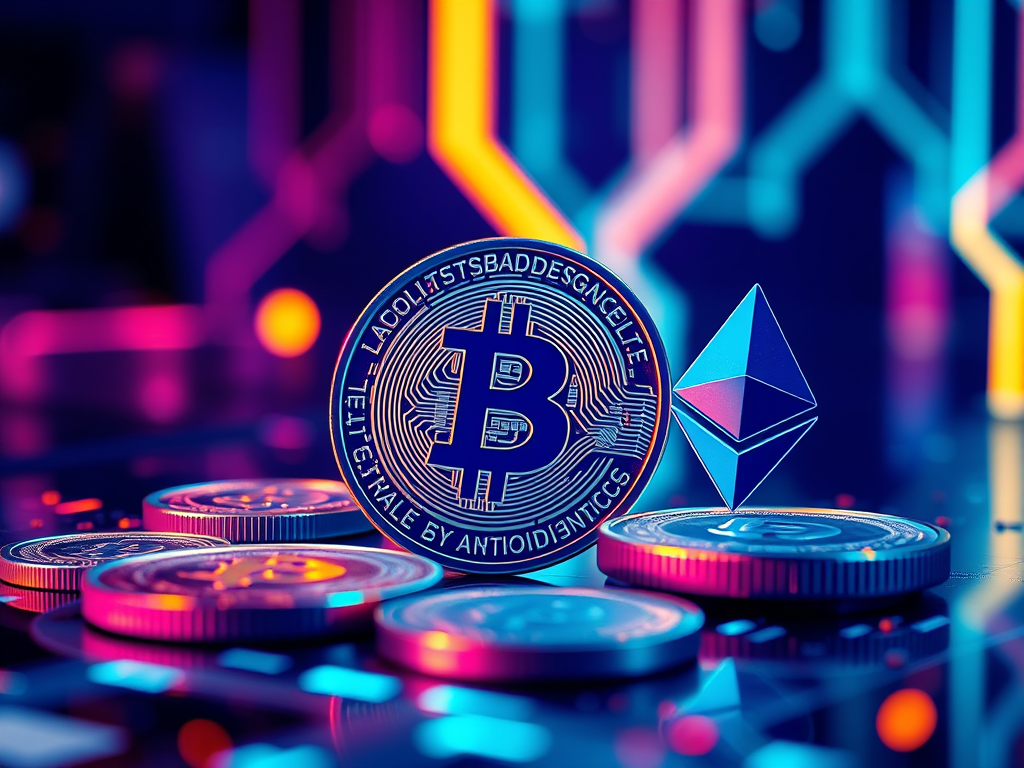Blockchain: Tiknoolajiyadda Bedeshay Adduunka Dijitaalka ah
Hordhac
Blockchain waa mid ka mid ah hal-abuurada ugu waaweyn ee casriga ah ee saameynta ku yeeshay nidaamyada maaliyadeed, dowladnimo, caafimaad, waxbarasho iyo tiknoolajiyad guud ahaan. Waxaa markii hore loo abuuray in uu noqdo saldhigga lacagta Bitcoin, balse si degdeg ah ayuu u noqday tiknoolajiyad u gaar ah oo loo adeegsado meelo badan.
Waa Maxay Blockchain?
Blockchain waa kayd xogeed furan oo loo qaybiyey dad badan (decentralized ledger), kaasoo diiwaangeliya macluumaadka si aan la beddeli karin. Magaca blockchain wuxuu ka kooban yahay laba eray: block (xirmo xog ah) iyo chain (silsilad). Taas macnaheedu waa in xogta la kaydiyo iyadoo lagu kala xirayo xirmooyin is daba joog ah oo la xaqiijiyey.
Sidee ayuu u shaqeeyaa Blockchain?
Xog la sameeyo – Tusaale: Macaamil ama heshiis.
Xogtaas waxaa laga sameeyaa block – Xirmo xogeed cusub.
Block-ga waxaa loo diraa shabakad kumbiyuutarro ah (nodes) si ay u xaqiijiyaan.
Marka la xaqiijiyo, block-ga waxaa lagu daraa silsiladda blocks-ka hore.
Xogtaasi hadda waa rasmi oo aan la beddeli karin.
Tani waxay u ogolaaneysaa in la helo nidaam furan oo aan la musuqmaasuqi karin.
Astaamaha Muhiimka ah ee Blockchain
Furan (Transparency): Qof kasta oo ku jira shabakadda wuu arki karaa waxa dhacay.
Ammaan (Security): Cryptography ayaa la adeegsadaa si xogta loo ilaaliyo.
Qayb-qaybsanaan (Decentralization): Ma jiro hal hay’ad oo maamusha.
Aan La Beddeli Karin (Immutability): Mar haddii xogta la diiwaangeliyo lama beddeli karo.
Noocyada Blockchain
1. Public Blockchain (Furan)
Kani waa blockchain qof kasta uu gali karo sida Bitcoin ama Ethereum.
2. Private Blockchain (Gaar ah)
Waa mid xiran, lagana isticmaalo shirkado iyo hay’ado gaar ah oo leh marin u gaar ah.
3. Consortium Blockchain (Iskaashi)
Waxaa wada isticmaala dhowr hay’adood kuwaas oo si wadajir ah u maamula.
Faa’iidooyinka Blockchain
Kordhinta Aaminaadda: Dadka iyo shirkadaha waxay heli karaan kalsooni buuxda maadaama xogtu aysan ahayn mid si sahal ah loo beddeli karo.
Hoos u Dhigista Kharashaadka: Waxa la baabi’iyey baahida qof dhexe ama hay’ad dhexdhexaadisa.
Xawaare Sare: Macaamilka waxa uu ku dhamaan karaa daqiiqado gudahood.
Isdhexgal Bilaash ah: Waxaa suurto gal ah in qof kasta uu si fudud uga qaybqaato ganacsiga caalamiga ah.
Caqabadaha Blockchain
Xeerar La’aan: Dalal badan wali ma aysan dejin xeerar cad oo ku saabsan blockchain.
Isticmaalka Tamarta Badan: Gaar ahaan nooca Bitcoin, wuxuu isticmaalaa koronto aad u badan.
Xirfado Yaraanta: Dad yar ayaa si qoto dheer u fahma tiknoolajiyada blockchain.
Kala Duwanaanta Nidaamyada: Shabakadaha kala duwan ma wada shaqeyn karaan si fudud.
Meelaha Laga Isticmaalo Blockchain
1. Maaliyad (Finance)
Lacagaha dijitaalka ah sida Bitcoin, Stablecoins, iyo bangiyada u beddelay diiwaanka blockchain.
2. Caafimaadka (Healthcare)
Diiwaangelinta xogta bukaanka si ammaan ah oo lagu heli karo wakhti kasta.
3. Supply Chain
La socodka badeecadaha laga soo bilaabo wax soo saarka ilaa macaamilka.
4. Doorashooyinka (Voting)
Doorashooyin lagu qabto si digital ah iyadoo laga hortagayo musuq iyo been abuur.
5. Aqoonsiga Dijitaalka ah
Dadka waxaa lagu aqoonsan karaa si gaar ah oo aan la been abuuri karin.
Smart Contracts – Heshiisyo Caqli leh
Smart contracts waa koodh la dhigayo blockchain-ka kaasoo si toos ah u fulaya marka shuruudo la buuxiyo. Tani waxay meesha ka saaraysaa baahida garsoore ama dhex-dhexaadiye.
NFTs – Alaabo Dijitaal ah oo Gaar ah
NFT (Non-Fungible Token) waa calaamad muujineysa lahaanshaha shay dijitaal ah sida sawir, muusig, ama farshaxan. Waxay ku dhisan yihiin blockchain si loo xaqiijiyo lahaanshaha.
DeFi – Maaliyadda Deegaanka ah
DeFi waa nidaam maaliyadeed oo furan, aan bangiyo lahayn, kuna shaqeeya smart contracts. Waxaa lagu bixiyaa ama lagu amaahdaa lacagaha iyadoo aan la isticmaalin banki.
CBDCs – Lacagaha Digital ee Dowladaha
Bangiyada dhexe ee dalal badan ayaa bilaabay inay sahamiyaan ama sameeyaan lacag dijitaal ah (CBDC) oo ka shaqeysa hab blockchain, si ay ula jaanqaadaan isbedelka dhaqaalaha.
Mustaqbalka Blockchain
Tiknoolajiyada blockchain waxay ka mid tahay tiirarka ugu waaweyn ee isbedelka dijitaalka ah. Mustaqbalka waxay noqon kartaa:
Asalka lacagaha cusub.
Saldhig u ah dowladnimo hufan.
Hab lagu xakameeyo aqoonsiga.
Diiwaan la isku halleyn karo oo aan la been abuuri karin.
Gunaanad
Blockchain waa tiknoolajiyad saameyn weyn ku yeelaneysa hab nololeedka casriga ah. Inkastoo ay jiraan caqabado, faa’iidooyinkeeda iyo suurtagalnimadeeda mustaqbalka ayaa ka dhigaya mid aan la iska indho tiri karin. Soomaalidu waxay heli karaan fursado badan haddii ay bartaan oo si xeel dheer u fahmaan tiknoolajiyaddan.
Blockchain: The Revolutionary Technology Shaping the Digital Future
Introduction
Blockchain is one of the most transformative technologies of the 21st century. Originally developed as the foundation for Bitcoin, it has since evolved into a powerful innovation impacting finance, supply chains, healthcare, identity management, voting systems, and more. Its ability to ensure secure, transparent, and decentralized data management has attracted the attention of governments, corporations, and individuals alike.
This article provides a detailed exploration of what blockchain is, how it works, its key features, benefits, limitations, applications, and its potential to reshape the digital landscape in the years to come.
What Is Blockchain?
At its core, blockchain is a decentralized digital ledger that records transactions across a network of computers. These transactions are grouped into blocks, and each block is linked to the previous one, forming a chain—hence the name blockchain.
Unlike traditional databases that are centrally controlled, blockchain is distributed and immutable. This means that no single entity controls the data, and once information is recorded, it cannot be easily altered or deleted. This makes it especially valuable in environments where transparency and trust are critical.
How Does Blockchain Work?
Understanding how blockchain works involves a few essential concepts:
1. Transactions and Blocks
Whenever a transaction occurs, it is broadcast to a network of computers (called nodes). The data from this transaction is collected into a block.
2. Verification
Before a block is added to the chain, network participants must agree that the transaction is valid. This consensus is typically achieved through algorithms like Proof of Work (PoW) or Proof of Stake (PoS).
3. Linking Blocks
Once verified, the new block is linked to the previous block using a cryptographic hash. This creates a secure and unbreakable chain of data.
4. Permanent Record
After it is added, the block becomes part of the public ledger and cannot be changed without altering all subsequent blocks, which is computationally infeasible.
Key Features of Blockchain
1. Decentralization
Blockchain operates without a central authority. Each participant (node) has a copy of the entire blockchain, making it highly resistant to failure or manipulation.
2. Transparency
Every transaction is visible to all participants in the network. This openness promotes trust and accountability.
3. Immutability
Once data is added to the blockchain, it cannot be changed or deleted. This ensures historical accuracy and prevents fraud.
4. Security
Blockchain uses advanced cryptographic algorithms to protect data, making it nearly impossible for hackers to tamper with the information.
5. Consensus Mechanisms
To validate transactions, blockchain uses mechanisms such as PoW, PoS, or Delegated Proof of Stake (DPoS), ensuring that only valid data is recorded.
Types of Blockchain
1. Public Blockchain
Open to anyone. Examples include Bitcoin and Ethereum. Public blockchains are fully decentralized and anyone can join and validate transactions.
2. Private Blockchain
Controlled by a single organization. Access is restricted, making it suitable for enterprise use where privacy is important.
3. Consortium Blockchain
A hybrid model where a group of organizations governs the blockchain. It’s semi-decentralized and ideal for industries requiring collaboration.
Benefits of Blockchain
1. Enhanced Security
Blockchain uses encryption, consensus, and decentralization to offer robust protection against fraud and cyberattacks.
2. Increased Transparency
With a public ledger, all stakeholders can access and verify data, promoting trust and accountability.
3. Reduced Costs
Blockchain eliminates the need for intermediaries, reducing transaction fees and administrative costs.
4. Faster Transactions
Traditional banking and settlement systems can take days, but blockchain transactions can occur within minutes or even seconds.
5. Improved Traceability
In supply chains, blockchain helps track products in real-time, enhancing efficiency and reducing fraud.
Challenges of Blockchain
1. Scalability
As the number of users grows, the network can become slower and more expensive to run.
2. Energy Consumption
Proof of Work systems like Bitcoin consume significant amounts of electricity, raising environmental concerns.
3. Regulatory Uncertainty
Many countries lack clear laws regarding blockchain and cryptocurrencies, creating confusion and risk.
4. Lack of Technical Understanding
Blockchain is complex, and there’s a shortage of skilled professionals to build and maintain blockchain solutions.
5. Interoperability Issues
Different blockchain platforms often cannot communicate with one another, which limits their effectiveness in integrated systems.
Real-World Applications of Blockchain
1. Financial Services
Blockchain is revolutionizing payments, remittances, lending, and insurance. Cryptocurrencies like Bitcoin, Ethereum, and stablecoins operate on public blockchains. DeFi (Decentralized Finance) enables peer-to-peer lending, borrowing, and investing without banks.
2. Supply Chain Management
Blockchain allows for real-time tracking of goods from production to delivery. It enhances transparency, reduces delays, and helps verify product authenticity.
3. Healthcare
Patient records stored on blockchain can be accessed securely by authorized providers, improving care and reducing errors. It also aids in drug traceability.
4. Voting Systems
Blockchain-based voting ensures transparency, reduces fraud, and increases trust in electoral processes.
5. Identity Verification
Blockchain offers secure and tamper-proof digital identities that can be used for banking, government services, and online authentication.
6. Intellectual Property and Digital Art (NFTs)
Non-Fungible Tokens (NFTs) are blockchain tokens that verify ownership of unique digital assets like art, music, and video.
7. Government and Public Services
Governments are exploring blockchain to manage land records, taxes, social services, and public funding with higher transparency.
Smart Contracts
A smart contract is a self-executing agreement written in code and stored on the blockchain. When predefined conditions are met, the contract executes automatically without intermediaries.
Example: A buyer sends cryptocurrency to a seller only if a product is delivered, eliminating the need for a third-party escrow service.
Smart contracts are used in insurance claims, real estate deals, and legal agreements.
Decentralized Finance (DeFi)
DeFi is a blockchain-based financial system that removes intermediaries like banks and brokers. Users can lend, borrow, and earn interest on crypto assets directly from their wallets.
Key DeFi platforms include:
Uniswap (decentralized exchange)
Aave (lending/borrowing)
MakerDAO (stablecoin issuance)
Central Bank Digital Currencies (CBDCs)
CBDCs are digital versions of a country’s currency issued by the central bank and powered by blockchain. They aim to combine the security of cash with the convenience of digital money.
Countries like China (Digital Yuan), the Bahamas (Sand Dollar), and Sweden (e-Krona) are actively exploring CBDCs.
Future of Blockchain
The future of blockchain looks promising with developments in:
Interoperability: Solutions like Polkadot and Cosmos aim to connect different blockchains.
Scalability: Layer 2 solutions like Lightning Network and Ethereum’s sharding aim to increase speed and reduce fees.
Green Blockchain: Moving from energy-hungry Proof of Work to energy-efficient Proof of Stake.
Mass Adoption: As blockchain becomes more user-friendly, businesses and individuals will integrate it into daily life.
Conclusion
Blockchain is more than just the backbone of cryptocurrencies—it’s a paradigm shift in how we store, share, and verify data. With its ability to provide trust, security, and transparency, blockchain has the potential to transform every aspect of the digital world.
Though challenges remain, its continuous evolution and growing adoption signal a future where blockchain becomes a fundamental part of global infrastructure. Whether you’re an entrepreneur, developer, or policy maker, understanding blockchain is key to thriving in the digital age.



